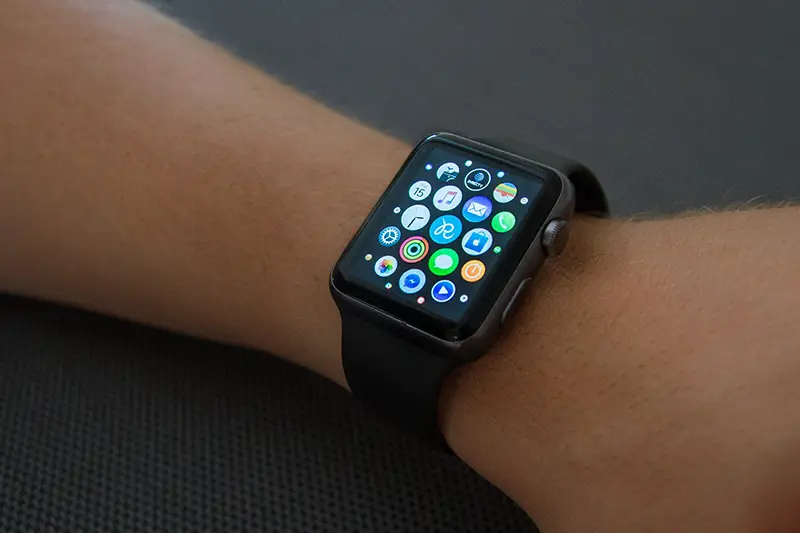Click here to get this post in PDF
Software is a bloodstream of modern technology. You can hardly find a single area of social, economic, and personal life that does not rely on some kind of digital product fundamentally and indispensably. Their design and development are exactly what the ever-growing IT industry is permanently busy with.
However, from our experience as a digital product design agency, you will hardly discern the magic of product design on the first try if you explore each of its aspects separately. Business analysts can explain to you what kind of research is needed to find alignment between the company’s strategy and market environment. UX designer will eagerly educate you about the logic and convenience of using the technology. UI designer makes impressive and intuitive visual interfaces. The motion specialist will demonstrate cool animation effects. But you will never figure out how all these apparently distinct parts of the puzzle connect to produce an integral, coherent, and intelligible entity.
This is where digital product design takes to the stage.
Definition
Digital product design is hard to be limited to a single interpretation because depending on the context it is considered both a field and a process.
Field
As a field, it comprises the whole range of activities on projecting and architecting structurally and functionally independent virtual assets. In this way, this realm is opposed to industrial design, dealing with “hard” material objects. In simple terms, it means that any aspect of software production is actually an element or a stage of the digital product design. Marketing, business analysis, user experience (UX) research, brand development, copywriting, UI/UX design, and usability studies, along with many other areas, are all rooted in the single paradigm of the product design, as honeycombs within one hive.
Process
As a process, digital product design covers only the most strategic designer activities. It is ongoing decision-making and problem-solving activity that takes place even after the release. It aims to ensure both a product’s successful realization according to the mission and concept and its subsequent stability and viability on the market in the long-lasting perspective.
In this sense, digital product design also encompasses all the production stages, starting from business target-setting and market research, and ending with program execution. Yet it focuses only on their most strategic and problematic dimensions.
Therefore, you should not be deluded with the word “design” attributed to this concept, since in fact, it goes far beyond merely designer functions and responsibilities.
What makes this area distinct and unique?
Despite its all-inclusive nature, digital product design constitutes a separate sphere of designer competence irreducible to any other occupation. Let’s figure out why.
Its particular characteristics and functions include:
1. Decision-making.
The strategic nature of digital product design means that it serves as a guide for everyone in the rough seas of the production process. It brings bridges between business shareholders, the company management, the production team, and potential users.
A UX designer or a data analyst can provide a knowledge base for sound decision-making, but they cannot make a one-size-fits-all decision that would determine the destiny of a product. This is the responsibility of a product designer to watch alignment between workflow and business goals, its conformity to the ultimate user-centered mission, and compliance with guidelines and standards of the brand. When any of these aspects is not followed, a digital product designer makes decisions towards re-establishing this harmony.
2. Consistency.
Along with external communications, digital product design provides synergy between all the inner parts and stages of the design process. It relies on the results of usability studies and business data analysis to ensure that all parts of the product team keep on track of the initially established strategy.
This also includes such issues as following brand and accessibility guidelines in every piece of design. In this way, digital product design actually sets an umbrella framework integrating the design and facilitating its further implementation in the development process.
3. Problem-solving.
Solving interdisciplinary design problems that cannot be reduced to any particular area of expertise is perhaps the most essential aspect of digital product design. By having access to the whole range of production resources, a product designer has the privilege to look at a problem from a birds-eye perspective, by considering, validating, and choosing among alternative solutions. For example, a problem related to coding may be addressed by changes in UI design, and marketing positions can be enhanced by graphic/motion design solutions.
4. State-of-the-art positioning.
With the permanent and sweeping changes in the realms of technology and communications, it is digital product design being in charge of keeping the product up to the mark. This is achieved by keeping track of the hi-tech trends and cutting-edge practices and developing corresponding plans and recommendations to implement by the product team.
Human factor matters
When we talk about digital product design, we mean a digital product designer. Always. In no other field, the significance of personal characteristics and skills is as important as in this area. Since a digital product designer holds all the endpoints of a production process in their hands, with a keen eye for their mutual synergy and consistency, this job imposes particular requirements on such a professional. At the very least, he or she must be relatively proficient in all the areas constituting key stages of the product design, from research to release. Any other designer is expected to master excellence in their particular field of expertise, but a product designer has to be a universal professional with an empathic understanding for all particular areas.
At best, a digital product designer is also a leader with a strategic mindset, a visionary capable always to be one step ahead in anticipating marketing trends, user needs, and technology innovations, as well as foreseeing potential operational problems affecting the entire production cycle.
Conclusion
In essence, the concept of digital product design is a more exquisite equivalent for software design, and still, it is more appropriate. Although the word “software” is often articulated in common thinking and speech, an end user always deals with not a program but an accomplished product. It has a specific function, a definite value, and a direct impact on the human lifestyle, making the true essence of design beneath sophisticated algorithms and visual aesthetics.
By dealing with the most strategically important issues of the design process and integrating them within the brand framework, digital product design both includes and transcends all the design (as well as most non-design) areas of the entire production cycle. You can get more information about different aspects of this field in our blog at https://cieden.com/.
You may also like: What is a Digital Product?
Image source: Unsplash.com



